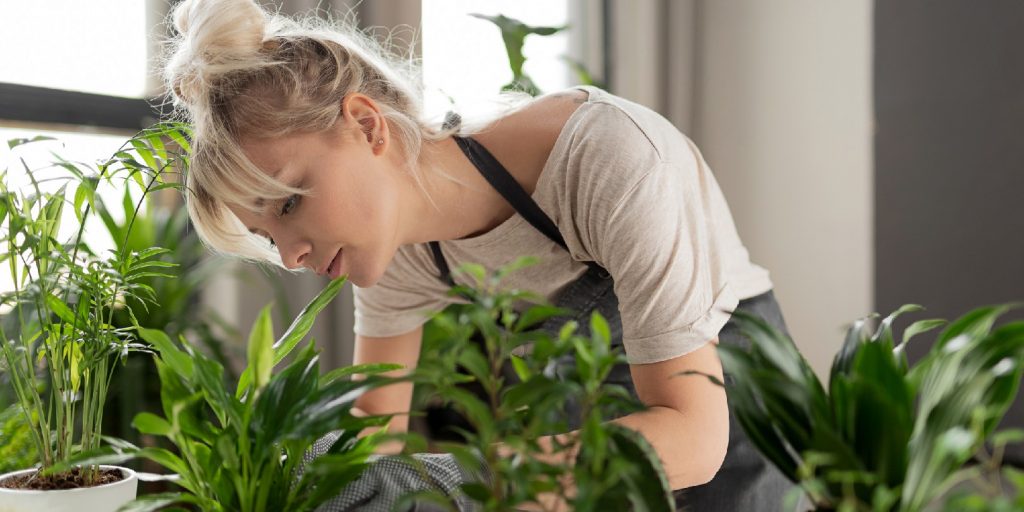5 Pro Tips for Starting an Indoor Vegetable Garden

Growing your own vegetables is a hobby that can save money and produce delicious, healthy food long-term. But did you know that you can start an indoor vegetable garden? Yes, growing herbs, vegetables, and even some fruits indoors is possible if you’re willing to put in the effort.
In this post, we’ll provide five pro tips for starting an indoor vegetable garden. From choosing the right type of container to selecting plants that grow well indoors, these tips will get you started on the right foot. With a bit of dedication and trial and error, you’ll be able to enjoy fresh, homegrown vegetables in no time. So let’s get started!
1. Assess Space and Light
A great first step to starting an indoor vegetable garden is determining the amount of space and light available in your home. For optimal growth of vegetables, it is best to use a room that receives natural light or to install artificial lights.
Most vegetables need six to eight hours of direct sunlight a day to grow successfully indoors. Installing artificial lights will suffice if it is impossible to find a room that receives this much sun. Invest in the highest quality lamp and timer to ensure an ideal light exposure.
Utilizing the right window covering is critical in providing the correct amount of sunshine for the plants without overheating them. If windows have blinds or curtains, ensure they are open during the day and closed at night. This will also help regulate temperature changes throughout the day.
2. Select and Set up Containers
Once you have determined the space available and the light source, you can select the containers for your vegetables. Containers should be wide enough for the root system of vegetable plants but shallow enough that they don’t become waterlogged. Be sure to look for containers made from eco-friendly, non-toxic materials that come in colors you enjoy looking at daily.
Each vegetable you are planting may require a larger or smaller container than others, so research each one before purchasing containers. The root systems of some plants can get large very quickly and require plenty of space to grow; other vegetables may require multiple plants in one container to yield enough produce at harvest time.
Ensure you place and arrange your containers according to sunlight needs and ventilation requirements to keep each plant healthy and flourishing throughout its life cycle. This can include grouping plants with similar needs or staggering them around the room so they all receive access to adequate sunshine and airflow.
3. Purchase the Right Soil
With all containers selected and properly arranged, it’s time to purchase soil for your garden! One key factor for selecting soil is ensuring it is organic; non-organic soil may contain harsh chemicals that could harm your plants over time.
Organic soil has not been treated with chemicals or fertilizers that are unnatural or potentially harmful to the health and nutrition of your vegetables. This soil type is typically more expensive than non-organic options, but it’s worth investing in if you want your vegetables to thrive over time!
Another important factor when purchasing soil is determining drainage capabilities; most vegetables prefer well-draining soil because they don’t grow well in overly wet conditions. This environment could make them susceptible to diseases or early death. To test drainage capabilities, scoop up some soil in your hand and squeeze it; if water runs freely through it, it is good-quality drainage soil.
4. Decide on Vegetable Types
The final step before planting seeds or starter seedlings is deciding what vegetables you want in your indoor vegetable garden! Research what grows best in your climate and how much sunlight each type of plant needs when considering varieties for your indoor garden.
Not all vegetables thrive in all climates, so research each type for compatibility with your home’s environment before purchasing seeds or starter seedlings. Also, look into when the harvest season typically occurs for each variety so you can plan for when you want your vegetables to be ready throughout the year.
Once you’ve completed your research on climate-appropriate varieties, have fun picking out different types of vegetables that intrigue you. Opting for various colors and shapes can add an interesting visual and nutritional element to your cooking. Some common types include tomatoes, bell peppers, eggplants, zucchini, squash, cucumbers, spinach, kale, and more.
5. Care for Your Garden
After you’ve planted your vegetables, it’s time to start caring for your indoor garden! Caring for each plant properly will help them grow successfully. Proper watering habits are vital for producing a healthy crop. You should water your plants evenly throughout the week to prevent waterlogging from too much H2O being added at once. Overwatering could result in potential plant root rot or overdependence on water. Be sure that each container has drainage holes at the bottom so any excess water can drain away from plant roots. Check moisture levels every other day and adjust the irrigation schedule if necessary.
To achieve optimal growth, adding fertilizer and compost — such as worm casings — every two weeks will help you grow vibrant, nutrient-rich vegetables. You can invest in a kitchen composter to make your own fertilizer at home with produce scraps. Just ensure your composter has a filter placed at the top to prevent any fruit fly invasions.
Conclusion
By following these five pro tips for starting an indoor vegetable garden, you’ll be well on your way to enjoying the fruits of your labor in no time. From finding an area with enough light and space to making your own fertilizer, these steps will have you cultivating delicious and fresh homegrown vegetables in no time. With dedication and patience, you can watch your garden flourish and enjoy tasty and nutritious vegetables in no time. So get started today and see what you can grow! Good luck!